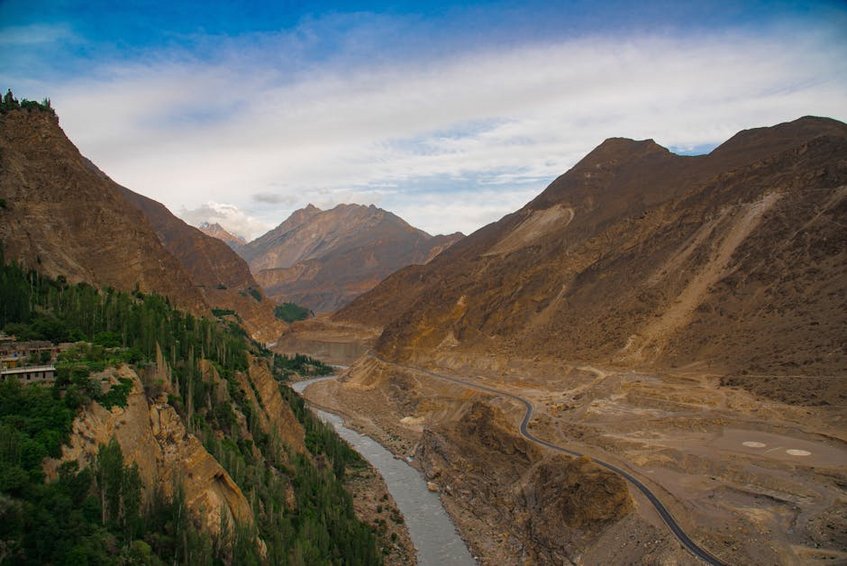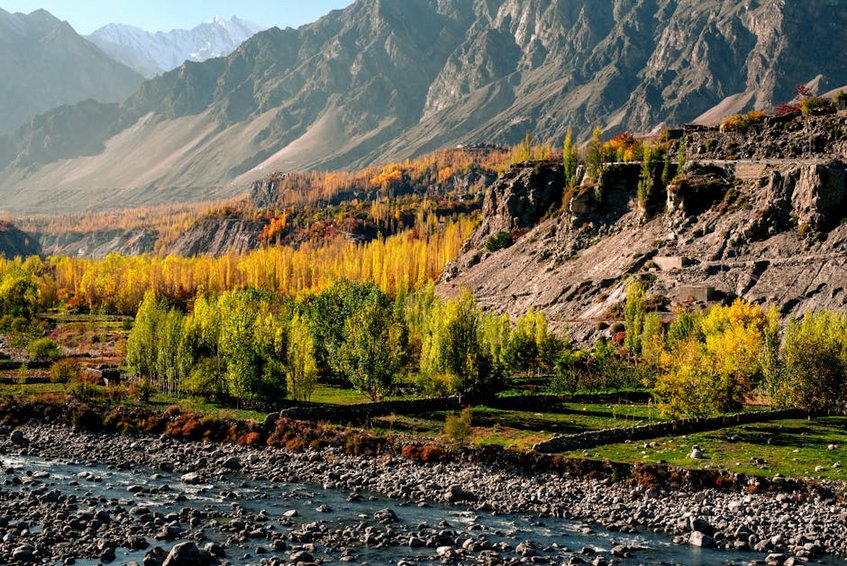Pakistan Hunza Valley Apricot Blossom: A Springtime Spectacle
The Pakistan Hunza Valley apricot blossom transforms this remote Himalayan region into a pastel-hued paradise each spring, drawing travelers seeking nature’s ephemeral beauty. These delicate flowers blanket ancient terraced orchards against dramatic Karakoram peaks, creating photographic opportunities and cultural immersion moments unique to northern Pakistan. This guide covers optimal viewing periods, local traditions, and practical logistics for experiencing this seasonal wonder responsibly.
Essential Valley Information
Hunza Valley sits within Pakistan’s Gilgit-Baltistan region at elevations between 2,438 meters and 4,877 meters above sea level, accessible via the Karakoram Highway. The valley’s history spans millennia with influences from Silk Road traders, Buddhist monks, and the independent Hunza state that existed until 1974. Spring brings moderate temperatures ranging from 50°F to 68°F (10°C to 20°C) with minimal precipitation, ideal for outdoor exploration.
Geographical Highlights
Understanding the valley’s layout helps maximize your blossom viewing experience across different microclimates and elevations.
- Upper Hunza features higher altitude villages like Passu with later blossom cycles and stunning glacier backdrops for photography.
- Central Hunza around Karimabad offers the most accessible orchards with historic Baltit Fort providing elevated viewing platforms over flowering trees.
- Lower Hunza near Aliabad blooms earliest in the season with extensive terraced farms descending toward the Hunza River.
- Budget travelers spend $35-50 daily using shared jeeps, guesthouses, and local eateries while still enjoying prime blossom viewing locations and basic amenities.
- Mid-range visitors allocate $75-120 daily for private rooms with mountain views, restaurant meals, and guided day hikes to remote blossom spots with photography instruction.
- Luxury experiences cost $150-250 daily featuring boutique hotels, private vehicle with driver, and multi-day guided tours including specialized blossom photography workshops.
- Pakistan Tourism Development Corporation
- Wild Frontiers Travel Advisory
Historical and Cultural Context
Apricot cultivation dates back over 1,000 years in Hunza, with the fruit becoming central to local cuisine, economy, and cultural identity. The valley’s Ismaili Muslim community celebrates the blossom season with informal gatherings and thanks for the coming harvest. Traditional stone houses with carved wooden balconies create perfect frames for the pink and white flowers against mountain backgrounds.
Seasonal Considerations
Spring weather remains unpredictable with occasional late snowfalls at higher elevations that can extend the blossom period in some areas. The blooming progression typically moves from lower to higher villages over three weeks, allowing extended viewing opportunities for flexible travelers. Regional festivals like the Nowruz celebration in March sometimes coincide with early blossoms, adding cultural dimensions to visits.

Alt: “hunza-valley-apricot-orchards-spring-bloom-karakoram”
Pakistan Hunza Valley Apricot Blossom – Planning Your Trip
Successful Pakistan Hunza Valley apricot blossom viewing requires careful timing between late March and mid-April when the flowers peak across different elevation zones. Budget approximately $35-50 daily for budget travelers, $75-120 for mid-range comfort, accounting for transportation, meals, and guided tours. Secure accommodations three months early since quality hotels fill quickly during the short blossom season in this popular destination.
Best Time to Visit Hunza Valley
Peak blossom viewing occurs from March 25 to April 15 annually, with lower elevations flowering first and higher areas following within two weeks. Daytime temperatures range from 54°F to 70°F (12°C to 21°C) during this period, comfortable for hiking between orchard sites. Visit during weekdays to avoid domestic tourist crowds that swell on weekends, particularly around Karimabad and Altit Fort areas.
Budget Planning and Costs
Your daily expenses vary significantly based on accommodation style, dining preferences, and guided activity inclusions.
Essential Preparation Checklist
Pack layered clothing for fluctuating mountain conditions including thermal layers, waterproof jacket, and sturdy hiking shoes with good traction. Bring camera equipment with polarizing filters to enhance flower colors against bright mountain light, plus extra batteries since electricity can be unreliable. Obtain Pakistan visa beforehand, purchase travel insurance covering high-altitude areas, and carry cash in Pakistani rupees since credit cards see limited acceptance outside hotels.
Top Attractions and Activities
Beyond the iconic blossom views, Hunza offers diverse experiences from ancient fort explorations to glacier trekking amidst spectacular mountain scenery. The region’s well-maintained hiking trails connect traditional villages through flowering orchards with minimal elevation gain suitable for most fitness levels. Local guides provide invaluable context about blossom varieties, harvesting techniques, and the best vantage points for photography throughout the day.
Must-See Highlights
Baltit Fort in Karimabad offers panoramic views over the valley’s blossom-covered slopes from its 700-year-old perch, with entry costing $4 per person. The Eagle’s Nest viewpoint requires a short drive but rewards with sunrise and sunset photography opportunities across multiple villages simultaneously. Altit Fort features older architecture and adjacent apricot orchards where you can learn about traditional drying methods from local farmers.
Hussaini Suspension Bridge near Passu provides thrilling crossings above the Hunza River with spectacular blossom-framed mountain vistas in all directions. Attabad Lake’s turquoise waters create stunning color contrasts with the pink blossoms along its shores, accessible by rented boat or lakeside hiking trails. Duikar Village, the highest settlement in the area, delivers unmatched 360-degree views of peak blossom season across the entire valley basin.
Hidden Gems and Local Favorites
Ganish Village’s ancient watchtowers and restored traditional houses sit surrounded by less-crowded orchards perfect for peaceful blossom viewing sessions. The Haldeikish rock carvings near Altit provide historical context amid flowering trees, with local guides available to explain the centuries-old inscriptions. Shimshal Valley’s remote location means later blossom dates and authentic cultural encounters with nomadic communities rarely visited by tourists.
Borith Lake’s serene setting attracts migratory birds during blossom season, creating unique wildlife photography opportunities alongside the floral displays. Local family orchards often welcome visitors for traditional meals featuring apricot-based dishes, providing income to communities while offering authentic experiences. The Karakoram Highway itself between Gulmit and Sost delivers continuous blossom vistas with numerous safe stopping points for photography.
Photography and Nature Walks
Early morning light between 6-8 AM creates soft illumination perfect for capturing blossom details with minimal wind disturbance across the orchards. The Golden Hour before sunset casts warm alpenglow on surrounding peaks, enhancing the contrast between white snow and pink flowers in compositions. Guided photography walks help identify unique angles and perspectives while respecting private property and fragile blossom ecosystems.
Respect local customs by asking permission before photographing people or entering private orchards, as these are working agricultural spaces. Use telephoto lenses to compress mountain backgrounds with foreground blossoms, creating the dramatic scale impressions characteristic of Himalayan landscape photography. Include cultural elements like traditional irrigation channels, stone walls, and wooden gates to contextualize the blossoms within Hunza’s living heritage.
Practical Travel Information
Reaching Hunza requires flying to Islamabad then taking a connecting flight to Gilgit or undertaking the scenic but long road journey along the Karakoram Highway. Accommodation ranges from basic guesthouses to comfortable hotels, though options remain limited during peak season requiring advance reservations. Local transportation relies on shared jeeps and hired vehicles since public transport operates infrequently between blossom viewing areas.
| Accommodation Type | Features and Locations | Price Range (USD) |
|---|---|---|
| Budget Guesthouses | Basic rooms with shared bathrooms in Karimabad and Aliabad, some with orchard views | $15-30/night |
| Mid-Range Hotels | Private bathrooms, heating, mountain views, and on-site restaurants in central locations | $45-80/night |
| Boutique Properties | Traditional architecture with modern amenities, guided tours, and blossom-viewing terraces | $90-150/night |
| Homestays | Authentic family experiences with home-cooked meals and orchard access in villages | $20-40/night |


